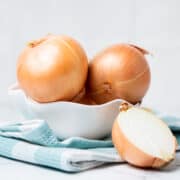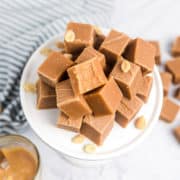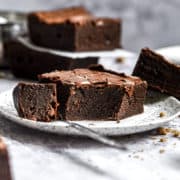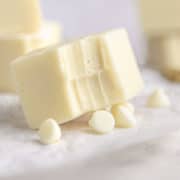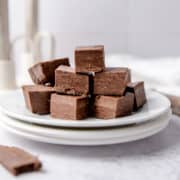Almost every cuisine in the world uses onions in some recipes and this versatile bulb is found in private and commercial kitchens everywhere. Once you know how to store onions, you will be able to keep plenty on hand, perhaps several varieties, so you can grab one whenever you want to add a distinctive onion flavor to your home cooking.
Whether you are using green onions, red, white, yellow, or sweet ones, this delicious bulb is easy to cook with and there are literally thousands of recipes where you can use this ingredient.

Jump to:
Onions contain antioxidants along with sulfur-containing compounds. They are made up of fiber and carbohydrates in the form of simple sugars. In addition, onions contain Vitamins B6, B9, and C, and also potassium, according to the National Onion Association.
I can't remember the last time I ran out of onions. I literally add them to everything! One of my favorite things to make is Indian egg puffs, and I'm also partial to homemade French onion soup! Do onions make you cry too? I find that either chewing gum or holding my breath while cutting them can be helpful.
What are Onions?
Onions (Allium Cepa) are bulbs that grow underground. They are closely related to garlic, scallions, leeks, shallots, and chives, and can be fried, boiled, steamed, roasted, sautéed, or enjoyed raw. They can also be powdered to make onion powder, or eaten raw perhaps as a garnish or in a salad or sandwich.
There are many different colors and types of onions and they also range from small to large, and from sweet onions to piquant ones. If onions are eaten before they've grown to their full size, they're known as spring onions, green onions, scallions, or summer onions.
Famous onion dishes include French onion soup, bloomin' onion, liver and onions, onion rings, cheese and onion tarts, quiches, pastries, and so on.
How to Choose the Best Onions
When selecting whole onions, look for dry, papery skin and a firm texture. Reject any that have wet skin, soft spots, a mushy texture, or a strong smell.
Emerging sprouts are also a bad sign. Onions are a tunicate bulb, which means they have a papery coating to protect them. If this is largely missing, damp, or rotten, the onion inside won't be good.

How to Store Onions
The best way to store onions depends on whether they're whole or cut, as well as when you're planning to use them.
- Whole onions should do best in a mesh bag or paper bag, in a cool, dark place out of direct sunlight. Choose somewhere that's between 45°F and 55°F. If this is much cooler than room temperature where you are, consider keeping them in the pantry, cellar, unheated basement, or even in the garage or shed. If you have no suitable place, you can keep them refrigerated instead, but they will go a bit soft in there as they can absorb moisture.
- Cut onions and leftover onions should be wrapped in plastic bags or kept in an airtight container and kept in the fridge. The same applies to peeled onions.
Most homegrown onions and grocery store onions such as red, white, and yellow onions, along with sweet ones like Vidalia and Walla Walla, are great for long-term storage. They should stay fresh for 2 or even 3 months when kept the right way, at the correct storage temperature, and in a suitable place. Check on your stored onions periodically so that if they are beginning to go a bit soft, you can use them sooner.
If you don't have a suitable cool, dry place or any spare refrigerator space, fresh onions should keep for 2 or 3 weeks at room temperature even if it's warm. Wherever you're keeping them, give them as much air and darkness as you can, since light and moisture result in mold and sprouting.
You can also freeze raw onions. Peel and chop them, then put them in a freezer bag, airtight container, plastic wrap, or aluminum foil. Unless I'm using a Ziploc bag or container, I would wrap them first in plastic wrap and then in foil to keep the air and moisture out. They should be fine in the freezer for up to 8 months. If they're cooked they should last a full year.
How to Tell if Onions are Rotten
Spoiled onions will develop dark patches which eventually turn to mold. They will also sprout and go mushy, which is when you should throw them out.
If they smell bad, that is also a bad sign.
Common Questions
Cutting an onion makes the cells release compounds into the air, turning the amino acids into lachrymator compounds. This is a type of sulfuric acid that irritates the eyes, making them water.
It's best to allow the air to circulate around homegrown or store-bought onions, so keep them in a wire basket, mesh bag, or similar storage container. If moisture gets trapped, this promotes spoilage, so don't keep them in a sealed bag or container. You can put paper towels under them to soak up any trace of moisture. Damp paper towels should be changed.
Farmers usually clip the onions an inch above the bulb and then keep the dry bulb onions in mesh bags or similar, perhaps hanging them in a root cellar or dark, cool place, to encourage the circulation of air. This is the best method for long-term storage and they'll last for months.

Interesting Facts
- Yellow, red, and white are the most common onion colors.
- If you're worried about having "onion breath" after eating them, chew a piece of fresh parsley.
- Although 125,000 acres of onions are grown each year in the United States, there are less than 1,000 onion farmers in the whole country.
Since so many recipes call for onions, this is a good reason to know how to store them so they last a long time. Find a good place for them and you can keep several varieties to add to whichever dishes you want to make.
